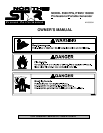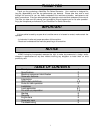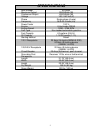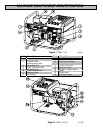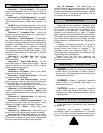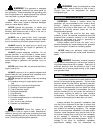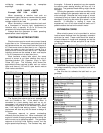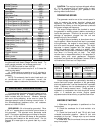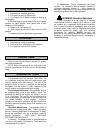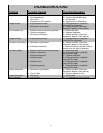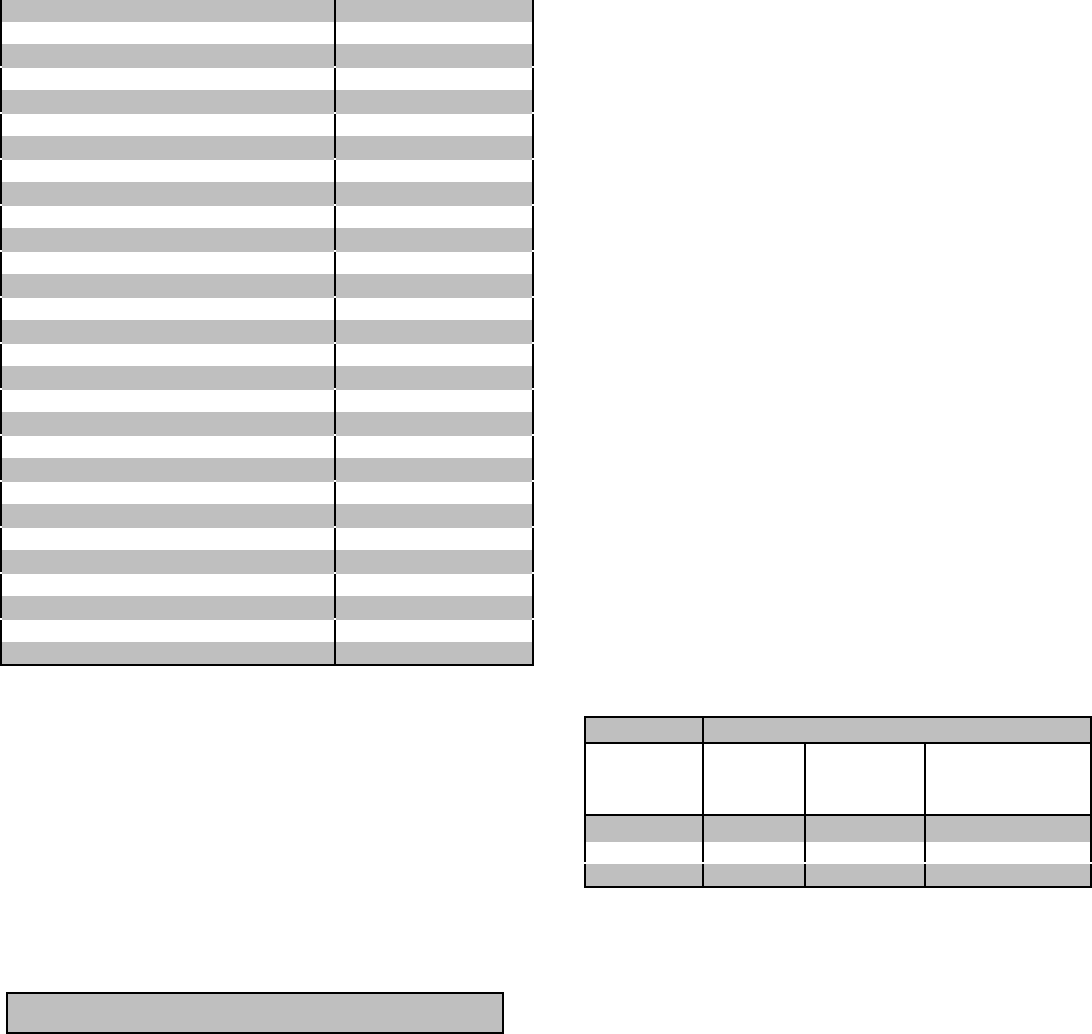
7
Hedge Trimmer 450
Home Computer 150 (a)
Impact Wrench 500
Jet Pump 800 (b)
Lawn Mower 1200
Light Bulb 100
Microwave Oven 700
Milk Cooler 1100 (b)
Oil Burner on Furnace 300
Oil Fired Space Htr (140,000 Btu) 400
Oil Fired Space Htr (85,000 Btu) 225
Oil Fired Space Htr (30,000 Btu) 150
Oven 4500
Paint Sprayer, Airless (1/3 HP) 600 (b)
Paint Sprayer, Airless (handheld) 150
Radio 200 (a)
Refrigerator 600 (c)
Slow Cooker 200
Submersi ble Pump (1-1/2 HP) 2800 (b)
Submersible Pump (1 HP) 2000 (b)
Submersi ble Pump (1/2 HP) 1500 (b)
Sump Pump 600 (b)
Table Saw (10”) 2000 (b)
Television 500 (a)
Toaster 1000
Vacuum cleaner 250
VCR 70 (a)
Water Heater 3000
Weed Trimmer 500
(a) Always use a voltage surge protector between
the generator and these voltage sensitive loads. To
order a surge protector call customer service at 1-
800-270-0810 and ask for item # 30793.
(b) Hard-starting motors require 3 to 5 times the
rated running watts.
(c) These loads may require up to 15 minutes to
restart due to its normal build up of compressor head
pressure.
NOTE: For extremely hard to start loads such as
air conditioners and air compressors, consult the
equipment dealer to determine the maximum wattage.
PRE-START PREPARATIONS
Your generator has been thoroughly tested prior to
shipment from the factory. A factory test report has
been included with this manual. However, damage
can occur during shipping, so be sure to check for
damaged parts or loose or missing nuts and bolts. If
the aforementioned problems occur, call customer
service at 1-800-270-0810.
GROUNDING - All uni ts must be grounded. Drive
a 3/4” or 1” copper pipe or rod into the ground close to
the generator. The pipe/rod must penetrate moist
earth. Connect an approved ground clamp to the pipe.
Run a no. 12 Ga. wire from the clamp to the generator
grounding post located on the control panel. Do not
connect to a water pipe or a ground used by a radio
sy ste m .
CAUTION: The engine has been shipped without
oil. Fill the crankcase with oil before trying to start.
Low oil shut-down prevents your generator from
starting without sufficient oil.
OPERATING SPEED
The generator must be run at the correct speed in
order to produce the proper electrical voltage and
frequency. The speed of the engine was carefully
adjusted at the factory so that the generator produces
the proper voltage and frequency.
The output voltage should be checked to ensure
the generator is working properly before connecting a
load to the generator. Failure to do so could result in
damage to equipment pl ugged into the unit and
possible injury to the individual.
All engines have a tendency to slow down when a
load is applied. When the electrical load is connected
to the generator, the engine is more heavily loaded,
and as a result the speed drops slightly. This slight
decrease in speed, together with the voltage drop
within the generator itself, results in a slightly lower
voltage when the generator is loaded to its full capacity
than when it is running with no load. The slight
variation has no appreciable effect in the operation of
motors, lights and most appliances. Electronic
equipment and clocks will be affected if correct RPM is
not maintained. See Load vs. Output chart.
Load Output
Percent of
Generator
Output
Speed
(RPM)
Frequency
(Hz)
Generator
Voltage at 120V
Receptacle
0 % 3750 62.5 129V
50 % 3600 60.0 120V
100 % 3540 59.0 112V
Output voltage should be periodically checked to
ensure continued proper operation of the generating
plant and appliances, it can be checked with a portable
meter. Frequency can be checked using an electric
clock with a sweep second hand. Timed against a
wristwatch or a stopwatch the clock should be correct
within +/- 2 seconds per minute. Engine speed
adjustments should be done by a qualified technician.
BEFORE STARTING
1. Make sure the generator is positioned on firm
l eve l surface .
2. Check the crankcase for oil and maintain at a
proper level.
3. Check fuel level and fill tank 7/8 full with fresh
unleaded automotive gasoline. Never fill fuel tank
completely to the top. Always wipe up and remove
any spilled gasoli ne.
4. Make sure that the exhaust fumes are directed
away from people.



